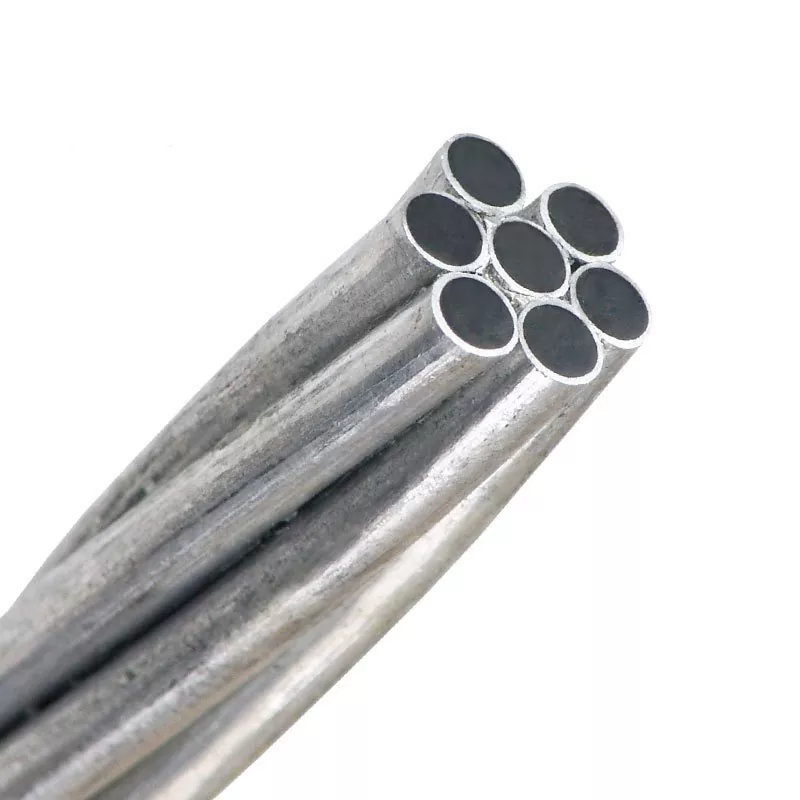 English
English Español
Español  Português
Português  русский
русский  Français
Français  日本語
日本語  Deutsch
Deutsch  tiếng Việt
tiếng Việt  Italiano
Italiano  Nederlands
Nederlands  ภาษาไทย
ภาษาไทย  Polski
Polski  한국어
한국어  Svenska
Svenska  magyar
magyar  Malay
Malay  বাংলা ভাষার
বাংলা ভাষার  Dansk
Dansk  Suomi
Suomi  हिन्दी
हिन्दी  Pilipino
Pilipino  Türkçe
Türkçe  Gaeilge
Gaeilge  العربية
العربية  Indonesia
Indonesia  Norsk
Norsk  تمل
تمل  český
český  ελληνικά
ελληνικά  український
український  Javanese
Javanese  فارسی
فارسی  தமிழ்
தமிழ்  తెలుగు
తెలుగు  नेपाली
नेपाली  Burmese
Burmese  български
български  ລາວ
ລາວ  Latine
Latine  Қазақша
Қазақша  Euskal
Euskal  Azərbaycan
Azərbaycan  Slovenský jazyk
Slovenský jazyk  Македонски
Македонски  Lietuvos
Lietuvos  Eesti Keel
Eesti Keel  Română
Română  Slovenski
Slovenski  मराठी
मराठी  Srpski језик
Srpski језик
Why Is Bare Conductor Cable a Key Component in Power Transmission?
2025-06-27
Bare Conductor Cable is one of the most fundamental and widely used types of conductors in power transmission systems. It is extensively applied in overhead transmission lines, high-voltage power grids, and connections between substations. With no external insulation, it relies on air insulation and safe installation distances. Though its structure is simple and cost-effective, its performance is significant. This article will introduce the advantages, types, applications, and purchasing considerations of Bare Conductor Cable to help users better understand this crucial electrical material.

What Are the Common Types of Bare Conductor Cable?
The common types of Bare Conductor Cable include AAC (All Aluminum Conductor), AAAC (All Aluminum Alloy Conductor), ACSR (Aluminum Conductor Steel Reinforced), and ACAR (Aluminum Conductor Alloy Reinforced). AAC is suitable for short-distance transmission, AAAC offers better corrosion resistance, while ACSR—with a steel core to enhance mechanical strength—is ideal for long-distance and high-tension applications. Each type differs in conductivity, tensile strength, and economic efficiency, so users should choose based on their specific needs.
What Are the Key Advantages of Bare Conductor Cable?
The greatest advantages of Bare Conductor Cable are its low cost, high transmission efficiency, simple structure, and ease of installation. Without an insulating layer, it has excellent thermal stability and can withstand higher temperatures and currents. In high- and ultra-high-voltage overhead lines, it minimizes capacitive effects and improves overall transmission efficiency. Additionally, it has low maintenance costs and strong long-term operational stability, making it an indispensable part of power infrastructure.
What Are the Main Application Areas of Bare Conductor Cable?
Bare Conductor Cable is widely used in various power transmission systems, such as urban and rural overhead lines, substation distribution systems, railway and transit power grids, etc. In remote or mountainous areas, its lightweight and flexible installation features make it ideal for complex terrains. Moreover, many industrial zones and large power plants use bare conductors for internal grid connections.
What Should Be Considered When Purchasing Bare Conductor Cable?
When selecting Bare Conductor Cable, key considerations include whether its conductivity meets power demands, whether its tensile strength matches line tension, its corrosion resistance under local weather conditions, and whether it meets national or international standards. Manufacturer reputation and after-sales service are also crucial; it is advisable to choose experienced and reputable suppliers for cooperation.
What High-Quality Bare Conductor Cable Products Can We Offer You?
We are a professional manufacturer of power cables, committed to providing customers with high-quality, high-performance Bare Conductor Cable products. We offer custom options for AAC, AAAC, ACSR, and more, suitable for a wide range of power transmission and distribution projects.
Welcome to visit our website for more details:
We look forward to building a long-term partnership with you!



